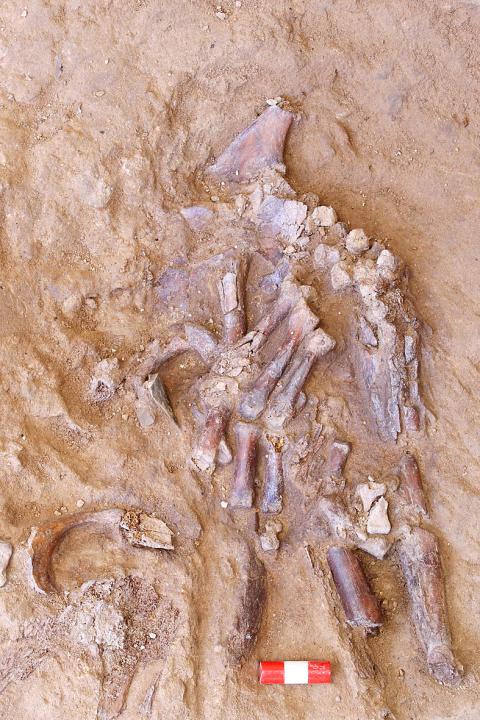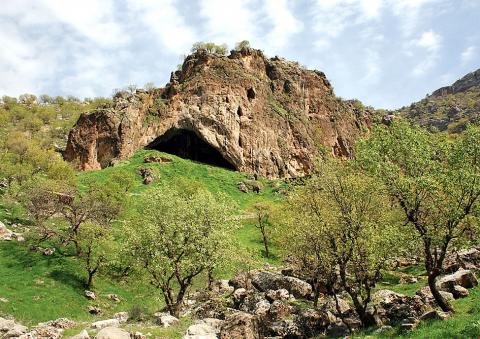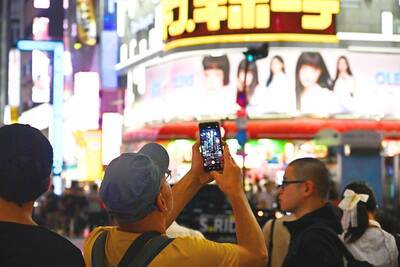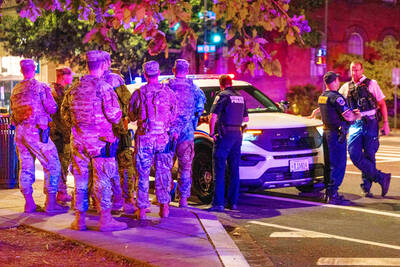A Neanderthal skeleton unearthed in an Iraqi cave famous for fossils of the extinct cousins of Homo sapiens is providing fresh evidence that they buried their dead — and intriguing clues that flowers might have been used in such rituals.
Scientists on Tuesday said that they had discovered in Shanidar Cave in the semi-autonomous Kurdistan region of northern Iraq the well-preserved upper body skeleton of an adult Neanderthal who lived about 70,000 years ago.
The individual, dubbed Shanidar Z, was perhaps in his or her 40s or 50s — the sex was undetermined.

Photo courtesy of Graeme Barker / Reuters
The cave was a pivotal site for mid-20th century archeology. Remains of 10 Neanderthals — seven adults and three infants — were dug up there six decades ago, offering insight into the physical characteristics, behavior and diet of the species.
Clusters of flower pollen were found at that time in soil samples associated with one of the skeletons, a discovery that prompted scientists involved in that research to propose that Neanderthals buried their dead and conducted funerary rites with flowers.
That hypothesis helped change the prevailing popular view at the time of Neanderthals as dimwitted and brutish, a notion increasingly discredited by new discoveries.

Photo courtesy of Graeme Barker / Reuters
However, critics cast doubt on the “flower burial,” arguing that the pollen could have been modern contamination from people working and living in the cave, or from burrowing rodents or insects.
The bones of Shanidar Z, which appear to be the top half of a partial skeleton unearthed in 1960, were found in sediment containing ancient pollen and other mineralized plant remains, reviving the possibility of flower burials.
The material is being examined to determine its age and the plants represented.
“So from initially being a skeptic based on many of the other published critiques of the flower-burial evidence, I am coming round to think this scenario is much more plausible and I am excited to see the full results of our new analyses,” said University of Cambridge osteologist and paleoanthropologist Emma Pomeroy, lead author of the research published in the journal Antiquity.
Academics have argued for years about whether Neanderthals buried their dead with mortuary rituals much as our species does, part of the larger debate over their levels of cognitive sophistication.
“What is key here is the intentionality behind the burial. You might bury a body for purely practical reasons, in order to avoid attracting dangerous scavengers and/or to reduce the smell. But when this goes beyond practical elements it is important because that indicates more complex, symbolic and abstract thinking, compassion and care for the dead, and perhaps feelings of mourning and loss,” Pomeroy said.
Shanidar Z appears to have been deliberately placed in an intentionally dug depression cut into the subsoil and part of a cluster of four individuals.
“It seems clear that Shanidar was a special place, with bodies being placed just in one part of a large cave,” University of Cambridge archeologist and study coauthor Graeme Barker said.

BRUSHED OFF: An ambassador to Australia previously said that Beijing does not see a reason to apologize for its naval exercises and military maneuvers in international areas China set off alarm bells in New Zealand when it dispatched powerful warships on unprecedented missions in the South Pacific without explanation, military documents showed. Beijing has spent years expanding its reach in the southern Pacific Ocean, courting island nations with new hospitals, freshly paved roads and generous offers of climate aid. However, these diplomatic efforts have increasingly been accompanied by more overt displays of military power. Three Chinese warships sailed the Tasman Sea between Australia and New Zealand in February, the first time such a task group had been sighted in those waters. “We have never seen vessels with this capability

A Japanese city would urge all smartphone users to limit screen time to two hours a day outside work or school under a proposed ordinance that includes no penalties. The limit — which would be recommended for all residents in Toyoake City — would not be binding and there would be no penalties incurred for higher usage, the draft ordinance showed. The proposal aims “to prevent excessive use of devices causing physical and mental health issues... including sleep problems,” Mayor Masafumi Koki said yesterday. The draft urges elementary-school students to avoid smartphones after 9pm, and junior-high students and older are advised not

Philippine President Ferdinand Marcos Jr has fired his national police chief, who gained attention for leading the separate arrests of former Philippine president Rodrigo Duterte on orders of the International Criminal Court and televangelist Apollo Carreon Quiboloy, who is on the FBI’s most-wanted list for alleged child sex trafficking. Philippine Executive Secretary Lucas Bersamin did not cite a reason for the removal of General Nicolas Torre as head of the 232,000-member national police force, a position he was appointed to by Marcos in May and which he would have held until 2027. He was replaced by another senior police general, Jose

POWER CONFLICT: The US president threatened to deploy National Guards in Baltimore. US media reports said he is also planning to station troops in Chicago US President Donald Trump on Sunday threatened to deploy National Guard troops to yet another Democratic stronghold, the Maryland city of Baltimore, as he seeks to expand his crackdown on crime and immigration. The Republican’s latest online rant about an “out of control, crime-ridden” city comes as Democratic state leaders — including Maryland Governor Wes Moore — line up to berate Trump on a high-profile political stage. Trump this month deployed the National Guard to the streets of Washington, in a widely criticized show of force the president said amounts to a federal takeover of US capital policing. The Guard began carrying